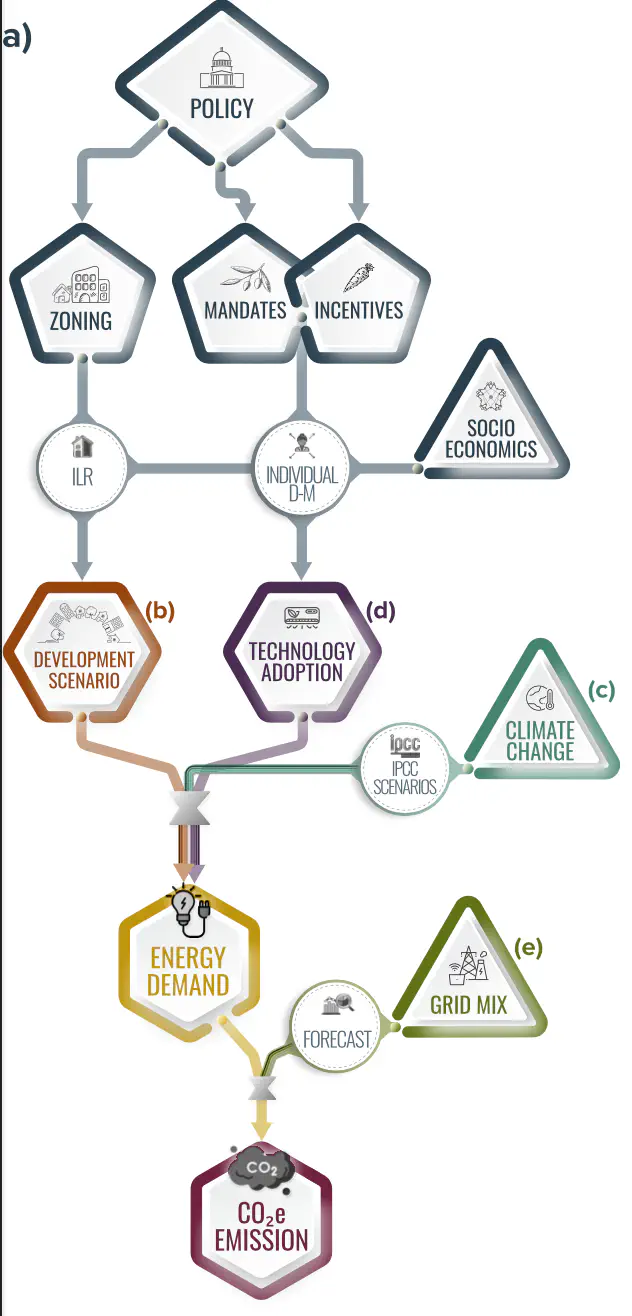IMPACT Pathways for Decarbonization

Increasing urbanization puts ever-increasing pressure on cities to prioritize sustainable growth and avoid carbon lock-in, yet available modeling frameworks and tools fall acutely short of robustly guiding such pivotal decision-making at the local level. Financial incentives, behavioral interventions, and mandates can drive technology adoption, while land-use zoning policies provide the framework for development of the built environment. Often policies and their impacts are evaluated top down, typically on a national scale, or post-hoc on developments vis-à-vis different policies in the past. Such high-level analyses and post-hoc evaluations cannot show possible developments pathways for specific cities, and hence cannot serve as input to policymakers at the local level such as county, municipal, or city governments. Here, we present IMPACT pathways from a bottom-up model with residence level granularity that integrate policy for technology adoption with zoning policy, climate change, and grid decarbonization scenarios. With the city at the heart of the analysis, our results show potential greenhouse gas emission pathways, identify synergies and trade-offs between policies, and show the importance of appropriate baselines.